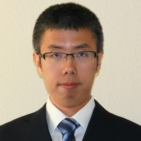Grain Size Control in the Processing of Poly-Crystalline Materials
A special issue of Crystals (ISSN 2073-4352). This special issue belongs to the section "Inorganic Crystalline Materials".
Deadline for manuscript submissions: closed (17 December 2021) | Viewed by 12611
Special Issue Editors
Interests: materials characterization; crystalline materials; powder metallurgy; mechanics of materials; computational materials science
Interests: Advanced ceramic and nanocomposite materials; Mechanical behavior of materials; Material processing and process modeling
Interests: Ceramics; Energy materials
Special Issue Information
Dear Colleagues,
In poly-crystalline materials, grain size, grain size distribution and grain boundaries are critical to materials’ physical and chemical properties. Tremendous progress has been made to control the microstructure evolution when processing bulk poly-crystalline materials, including many novel processing techniques. The microstructural features of the processed materials are correlated with the properties of the final products. Advances to retrieve the desired grain size distribution for specific applications depend on the comprehensive understanding of the mechanisms and kinetics of recrystallization and grain growth, as well as grain refinement techniques. There have also been considerable research efforts dedicated to developing both analytical and numerical grain growth/microstructure evolution models as an essential step toward strengthening the theoretical aspects of grain growth.
This Special Issue is particularly concerned with, but not limited to, the topics outlined in the keywords. We sincerely invite researchers in the field of material processing to contribute to this Special Issue and to make advances to this important aspect in poly-crystalline materials.
Dr. Xialu Wei
Prof. Diletta Giuntini
Dr. Yanhao Dong
Guest Editors
Manuscript Submission Information
Manuscripts should be submitted online at www.mdpi.com by registering and logging in to this website. Once you are registered, click here to go to the submission form. Manuscripts can be submitted until the deadline. All submissions that pass pre-check are peer-reviewed. Accepted papers will be published continuously in the journal (as soon as accepted) and will be listed together on the special issue website. Research articles, review articles as well as short communications are invited. For planned papers, a title and short abstract (about 100 words) can be sent to the Editorial Office for announcement on this website.
Submitted manuscripts should not have been published previously, nor be under consideration for publication elsewhere (except conference proceedings papers). All manuscripts are thoroughly refereed through a single-blind peer-review process. A guide for authors and other relevant information for submission of manuscripts is available on the Instructions for Authors page. Crystals is an international peer-reviewed open access monthly journal published by MDPI.
Please visit the Instructions for Authors page before submitting a manuscript. The Article Processing Charge (APC) for publication in this open access journal is 2600 CHF (Swiss Francs). Submitted papers should be well formatted and use good English. Authors may use MDPI's English editing service prior to publication or during author revisions.
Keywords
- Grain growth
- Grain size distribution
- Poly-crystalline materials
- Complexions
- Grain boundary strengthening
- Hall-Petch relationship
- Nano and micro-structural analysis
- Modeling







